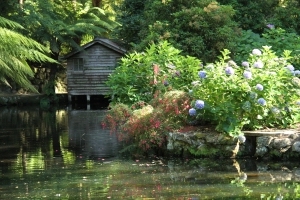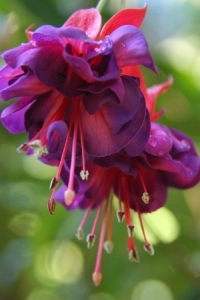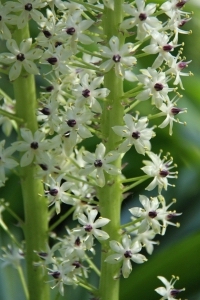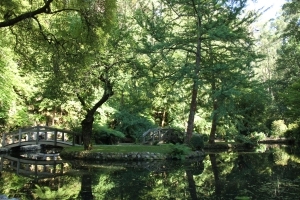By Charlene Sohn

Alfred Nicholas Memorial Gardens is located in Sherbrooke, Victoria, about an hour from Melbourne, in the Dandenong Ranges. Alfred Nicholas purchased the land after acquiring a fortune through patenting aspirin. The German company Bayer initially held the patent; however, restriction of global availability and the suspension of German patents during World War I led Alfred’s brother George, a pharmacist, to develop the painkiller. Alfred saw potential and made moves to patent it under the brand name Aspro. With the help of the Australian government, the Nicholas family won the rights to manufacture and sell the drug.
As was popular among the wealthy at the time, Alfred purchased the land in 1929 to build a summer residence. Construction of the garden required up to 80 workers during various stages, providing jobs for the unemployed during the Great Depression. Alfred preserved most of the native flora that occupied the property; however, he imported 150 trees from the United Kingdom and sought out, purchased, and moved established trees to the estate from all over Melbourne. Unfortunately, Alfred passed away in 1937 and never saw completion of his garden. His wife Isabel stayed on at the estate until the beginning of World War II.
The estate changed hands many times in the following years. During the war, it functioned as a children’s hospital. In 1955, the Nicholas Institute converted the house into a research laboratory. In 1965, the Nicholas Institute donated the gardens to the people of Victoria through the local council. The mansion has had several owners over the years and even one time functioned as a small hotel, but has mostly remained unused.

The wide paved footpath leading into the gardens originally served as the main drive of the estate and is believed to be one of the first private sealed roadways in Victoria. Lined by rock walls, shrubs, and flowers, the main drive continues past steps that lead to the art deco mansion, now privately owned, to a network of smaller paths that wind their way through the gardens.

The park’s most striking feature, however, is the ornamental lake. Trees and ferns stretch over the lake, doubly beautiful as they are mirrored in the still water. A walk around the lake area takes you past flowers blooming in rock gardens, over wooden bridges, near a waterfall flowing down a high stone wall, and to a small boathouse at the far end of the lake. Crossing over the bridges brings you to two small islands, ideal for lounging in the shade under a tree and watching ducks glide by as you listen to the waterfall.

Weekends at the gardens can get busy. While you may still find a quiet corner of the park to enjoy undisturbed, tourists snapping photos from every angle will occupy the lake area. If you want to experience the fairyland, be sure to go on a weekday.
Alfred Nicholas Memorial Gardens
Sherbrooke Road, Sherbrooke, Victoria 3789
Open 10 a.m. to 5 p.m. every day except Christmas Day
Free entry with free parking located across the road
http://parkweb.vic.gov.au/explore/parks/alfred-nicholas-memorial-gardens-gardens-of-the-dandenongs
If you would like to purchase this article for your publication, please click here to contact the author directly.

